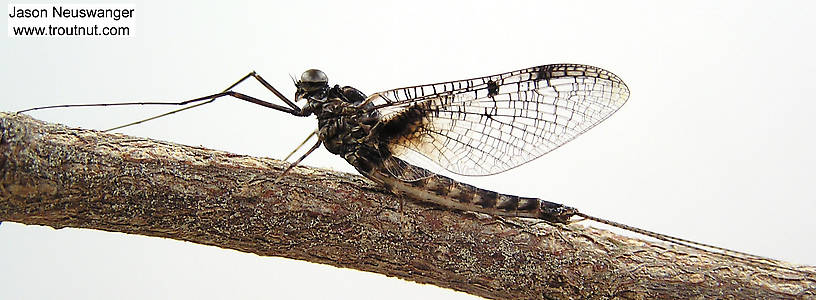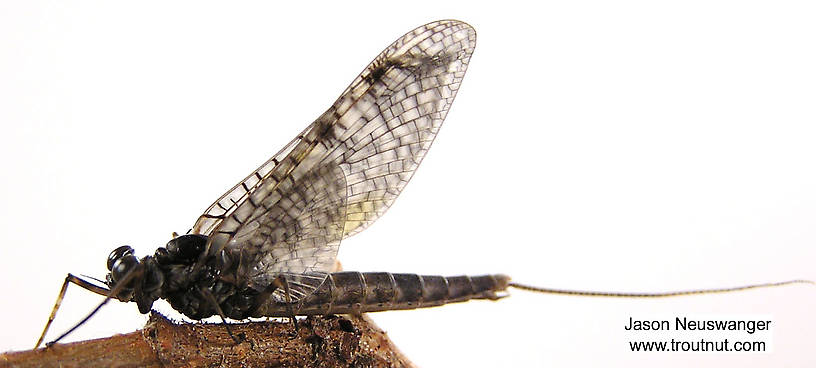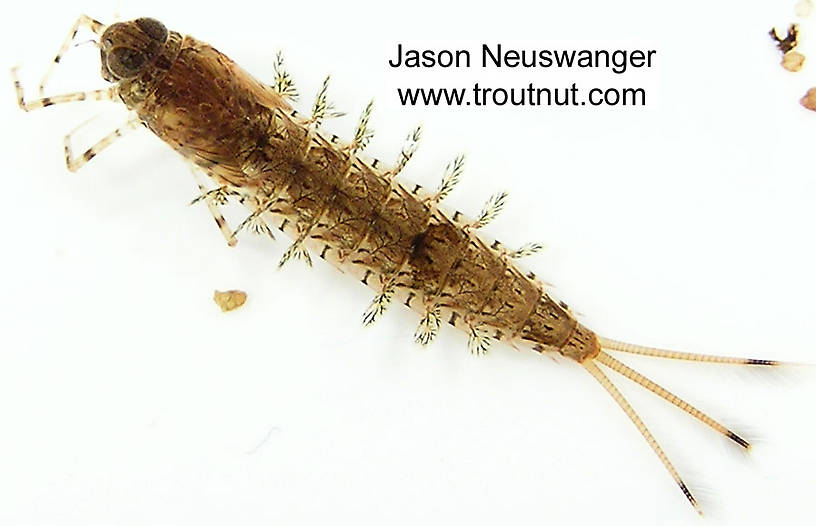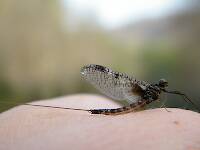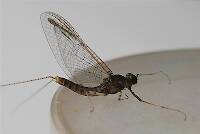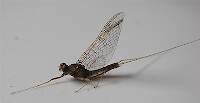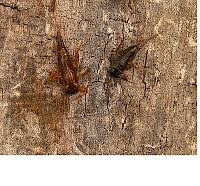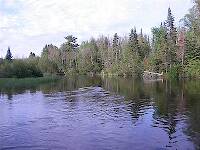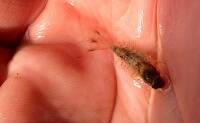
Hex Mayflies
Hexagenia limbata
The famous nocturnal Hex hatch of the Midwest (and a few other lucky locations) stirs to the surface mythically large brown trout that only touch streamers for the rest of the year.
Featured on the forum

Troutnut is a project started in 2003 by salmonid ecologist Jason "Troutnut" Neuswanger to help anglers and
fly tyers unabashedly embrace the entomological side of the sport. Learn more about Troutnut or
support the project for an enhanced experience here.
This topic is about the Mayfly Species Siphloplecton basale
Sadly, the largest mayflies of the early season come in small quantities. Siphloplecton basale matches the impressive size of the Ephemera drakes which follow two months later, but it does not match their numbers. It is common on one of my favorite rivers to see ten to fifteen of these elegant drakes dancing over a riffle in the early Spring. They are difficult to miss in the air, but on the water that quantity cannot get the trout or the angler excited.There are rumors of fishable Siphloplecton days, but I know none of the details. They might be locally important in places angler-entomologists have yet to visit in the prime months, an unsung local treasure like Baetisca laurentina.
Example specimens
Wiconisco37 on Feb 4, 2009February 4th, 2009, 10:27 am EST
they were discovered on Clarks Creek by a man from halifax, PA
i dont know what their numbers were like thgough
i dont know what their numbers were like thgough
Martinlf on Jun 10, 2009June 10th, 2009, 3:16 pm EDT
This would have been Greg Hoover. I tied up some flies for the hatch long ago, but have never used them. But I don't fish Clarks all that much now, so I'm not claiming that proves anything.
"He spread them a yard and a half. 'And every one that got away is this big.'"
--Fred Chappell
--Fred Chappell
Quick Reply
Related Discussions
Topic
Replies
Last Reply
9
Jun 13, 2008
by Wiflyfisher
by Wiflyfisher
6
Jun 20, 2008
by GONZO
by GONZO



